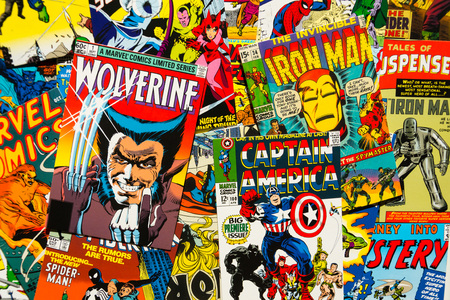Comic books have played a major role in shaping the world as we know it. They were created to entertain, but comic creators had no idea that they would change the course of history. In many ways, comic books are responsible for some of our most cherished values and beliefs. The comic book industry has changed dramatically over time, from graphic novels all the way to illustrated classics. Comic books will always be an important part of our culture. We can see history from two perspectives now: written history and sequential art that shows what really happened.
Comic Books
Now, comic books have a mass appeal. Everyone from your average Joe to professors who teach literature can appreciate comic books for what they are: works of art that deserve our attention and appreciation.
For instance, comic book reviews rank among the top three categories on Amazon’s list of best-selling products in both 2012 and 2013. The first comic book was created by Rodolphe Töpffer around 1827-1839 (although he himself considered the idea not new). In 1909 Charles M Schulz created comic strips Peanuts, which became one of the most popular comic books in history.
Graphic Novels
Graphic novels are a graphic story that is usually presented in the form of comic books. In recent years, graphic novels have grown to include many different genres and styles. This article will give an overview of graphic novels and how they can be used for readers of all ages.
The Good: Graphic novels often have more complex storylines than traditional comics because they allow for longer narratives with more twists and turns. They also tend to have a much darker tone which makes them perfect reading material for older readers who enjoy horror or suspense stories.
The Bad: Some graphic novelists may not understand that their artwork needs to be cleaned up before it is published as opposed to looking rough around the edges like most comic books do; this can make graphic novels difficult to read and not as visually appealing.
The Ugly: Graphic novelists can sometimes have trouble with deadlines which can lead to missed release dates for their graphic novels; this is a problem because it’s important that graphic novels are released on time so that readers know when they will be able to buy the next issue of a graphic novel.
A graphic novel can be a good introduction for younger readers to the graphic format because it focuses on storytelling rather than words and panels that are hard to read when you’re first learning how to visualize what’s happening in the story without having any information from other parts of the text.
It is important, however, to pick graphic novels that are appropriate for children. If you’re picking them up at a bookstore, take some time to look through the graphic novel section and find something that fits your child’s interests or reading level.
Illustrated Classics
Illustrations can not only effectively evoke a complex concept, but also express what text cannot. In the story of the “Little Rabbit” orphanage, the narrative portrays a fascinating and efficient institution, but it is these diagrams that allow readers to see a terrible reality: children considered to be of low potential begin to disappear from the register. Turn page.
We hope you loved this collaborative post as much as we did. (It may contain affiliate links.)


